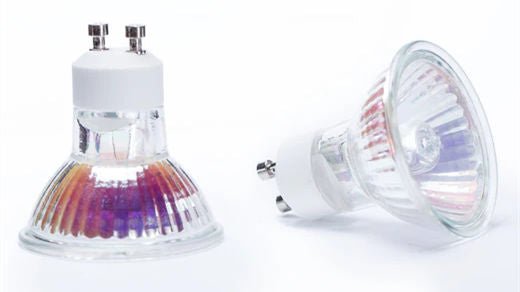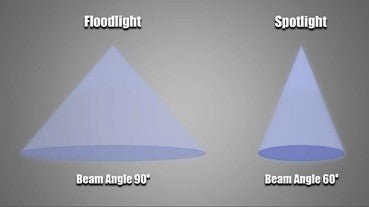When selecting high bay lights for indoor spaces, one crucial factor that often goes unnoticed is the Unified Glare Rating (UGR). Glare can significantly impact comfort and productivity in environments such as warehouses, gymnasiums, and large retail areas. Understanding UGR, how it's calculated, and how it affects high bay lighting choices is pivotal in creating a well-lit space that is both functional and comfortable.
Understanding Unified Glare Rating (UGR)
a. What is UGR?
UGR is a numerical way of quantifying how likely a luminaire is to cause discomfort to those around it. It is a measure developed by the International Commission on Illumination (CIE) and is used to evaluate the potential glare in lighting installations.
b. The Importance of UGR in Indoor Lighting
Glare can lead to eye strain, reduced visibility, and even headaches, making it an important factor to consider in indoor lighting design, especially in workplaces where visual tasks are performed.
The Calculation of UGR
a. The Principles of UGR Calculation
UGR is calculated using a formula that considers the luminance value of the luminaire, the background luminance, the size and position of the luminaire in the field of view, and the observer's position.
b. Factors Influencing UGR
Several factors affect the UGR value, including the light output of the luminaire, the contrast with the background, and the spatial distribution of the luminaires.
c. Interpretation of UGR Values
The UGR scale ranges from 5 to 40, where lower values indicate less glare. A UGR below 19 is typically considered acceptable for most indoor applications.
High Bay Lighting and UGR Challenges
a. Characteristics of High Bay Lights
High bay lights are designed for spaces with high ceilings, typically above 20 feet. They have a significant light output and are optimized for wide distribution to cover large areas.
b. The Relationship Between High Bay Lights and Glare
Due to their intensity and positioning, high bay lights can often result in high UGR values if not selected and placed carefully.

Strategies to Minimize UGR in High Bay Lighting
a. Opt for Luminaires with Lower Luminance
Selecting fixtures with lower luminance can help reduce the UGR. Luminaires with diffusers or optics designed to spread light can also diminish glare.
b. Utilize Indirect Lighting
Indirect lighting strategies, where light is bounced off ceilings or walls, can reduce direct glare. This can be particularly effective in spaces with high bay lighting.
c. Positioning and Layout
Proper positioning of high bay lights can minimize direct glare. The layout should ensure that the luminaires are not in the usual line of sight.
d. Control of Light Output
Dimmable high bay lights can help control the intensity of light and consequently the UGR. This can be especially useful in areas where varying activities take place.

Selecting the Right High Bay Lighting
a. Assessing the Specific Needs of Your Space
Evaluate the tasks performed, ceiling height, and the nature of the space to determine the appropriate type and intensity of high bay lighting.
b. Consideration of UGR in Product Specifications
Look for high bay lights with a UGR rating appropriate for your space. Manufacturers often provide UGR data for their products.
c. Quality of Light
High Color Rendering Index (CRI) and appropriate color temperature are important for visual comfort and should be considered alongside UGR.
Advanced Solutions for High Bay Lighting
a. Lighting Design Software
Use lighting design software to simulate different lighting scenarios and their resulting UGR values.
b. Smart Lighting Systems
Smart lighting systems can automatically adjust light levels based on the time of day, occupancy, and other factors, helping to manage UGR effectively.
Case Studies: Managing UGR in Real-World Applications
a. Industrial Settings
Examine how warehouses and factories have successfully managed UGR with high bay lighting to improve worker comfort and productivity.
b. Sports Facilities
Explore how high bay lighting solutions in gymnasiums and arenas address UGR to enhance the experience for both athletes and spectators.
c. Retail Spaces
Discuss how high bay lights in retail environments are used to create welcoming spaces that encourage shopping while controlling glare.
Legal Standards and Compliance
a. Overview of Lighting Standards
Review the lighting standards and guidelines that govern UGR and high bay lighting, such as those set by the Occupational Safety and Health Administration (OSHA) and the Illuminating Engineering Society (IES).
b. Compliance in Lighting Design
Discuss the importance of meeting these standards in your lighting design to ensure safety, comfort, and legal compliance.
Conclusion
In conclusion, managing UGR in high bay lighting is a nuanced but essential part of lighting design that impacts both the functionality and comfort of indoor spaces. By understanding UGR's calculation principles and how to incorporate this knowledge into the selection and placement of high bay lights, designers and facility managers can create environments that are both well-lit and comfortable. As technology advances, new solutions in lighting design and smart lighting controls will continue to emerge, offering even more sophisticated ways to manage UGR effectively. Remember, the goal of good lighting design is not just to illuminate a space, but to do so in a way that supports the well-being and productivity of those using it.


































Leave a comment
This site is protected by hCaptcha and the hCaptcha Privacy Policy and Terms of Service apply.